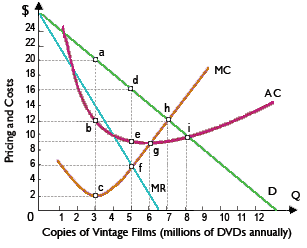Nostalgia Corporation would exactly break-even on its Silver Screen DVDs when, in place of correctly identifying its profit maximizing strategy, this: (w) operated at point i, charging only $10 per DVD and producing 8 million DVD. (x) priced each DVD at $24 and sold only 900,000 copies. (y) charged $16 per DVD and sold 5 million DVDs. (z) produced 6.5 million DVDs and sold them for $13.50 apiece.

Hello guys I want your advice. Please recommend some views for above Economics problems.